Fish aggregation at farms can increase the benefits of protection and have greater impacts on mobile species
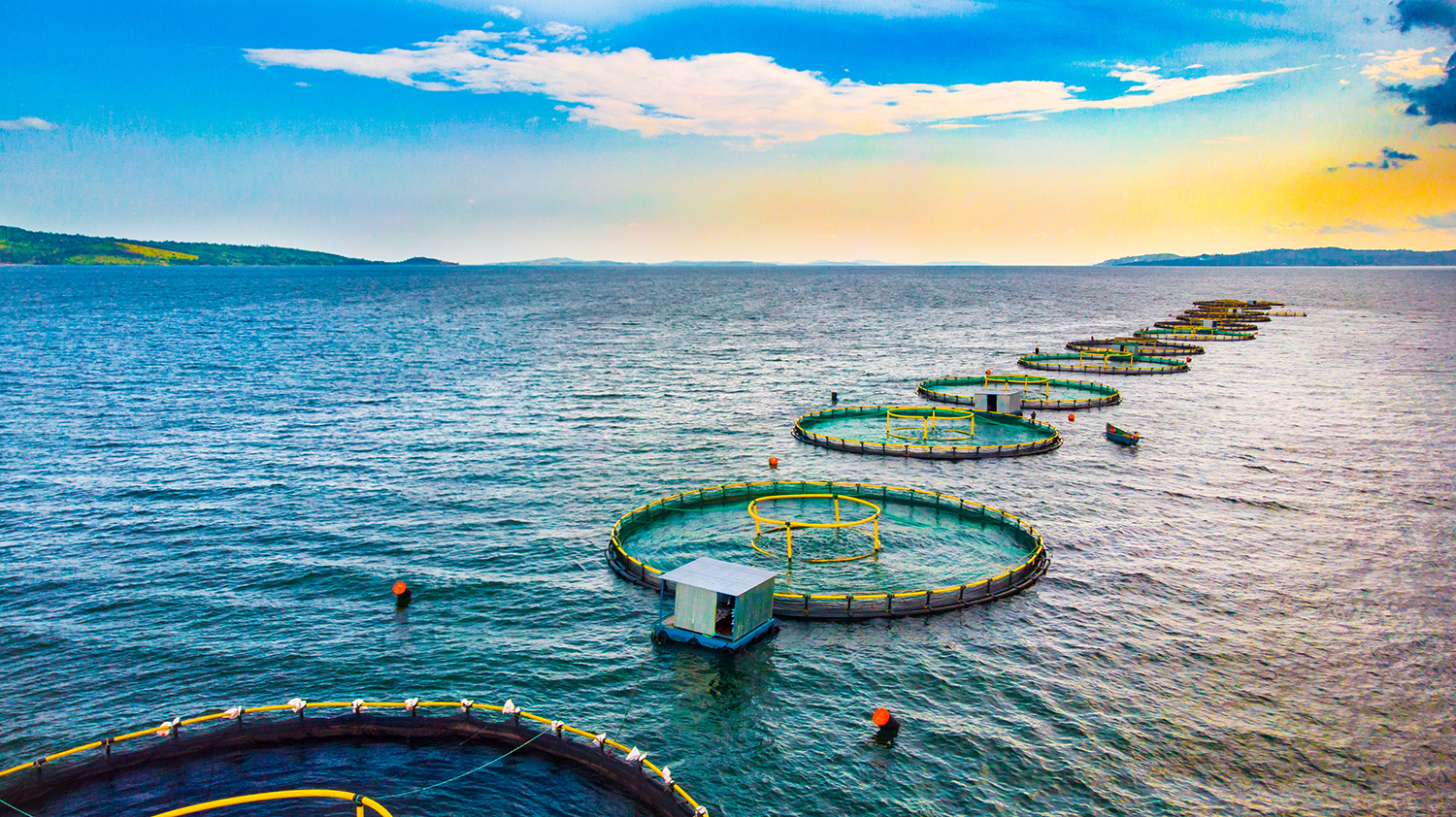
As the aquaculture industry further develops in marine environments, simultaneously maintaining the health and sustainability of wild populations and fisheries is critical. Such an approach is essential both as a backstop for biodiversity and for food security and a livelihood source for millions of people worldwide.
Given the social and economic importance of wild fisheries and key ecological roles of targeted wild populations, understanding how potentially competing seafood production methods interact with fisheries will be important for optimizing the co-management of these closely connected sectors and guiding sustainable seafood production into the future.
Marine aquaculture can alter the population dynamics of local wild species through three key mechanisms, which vary in their expected influence and intensity by farm type, farmed species, environment, and wild species characteristics, among other factors. First, the added physical structure of the farm may aggregate wild species by providing structure for habitat. Second, farming operations often restrict other ocean uses, including wild capture fisheries, which may impact the population dynamics of target species and the economics of the fisheries through the redistribution of fishing effort following farm installation. Third, the application and accumulation of excess feed in finfish farms, fouling on aquaculture infrastructure, and wastes from cultured organisms can also have positive (e.g., nutritional supplements) and negative (e.g., disease) impacts on the surrounding ecosystem.
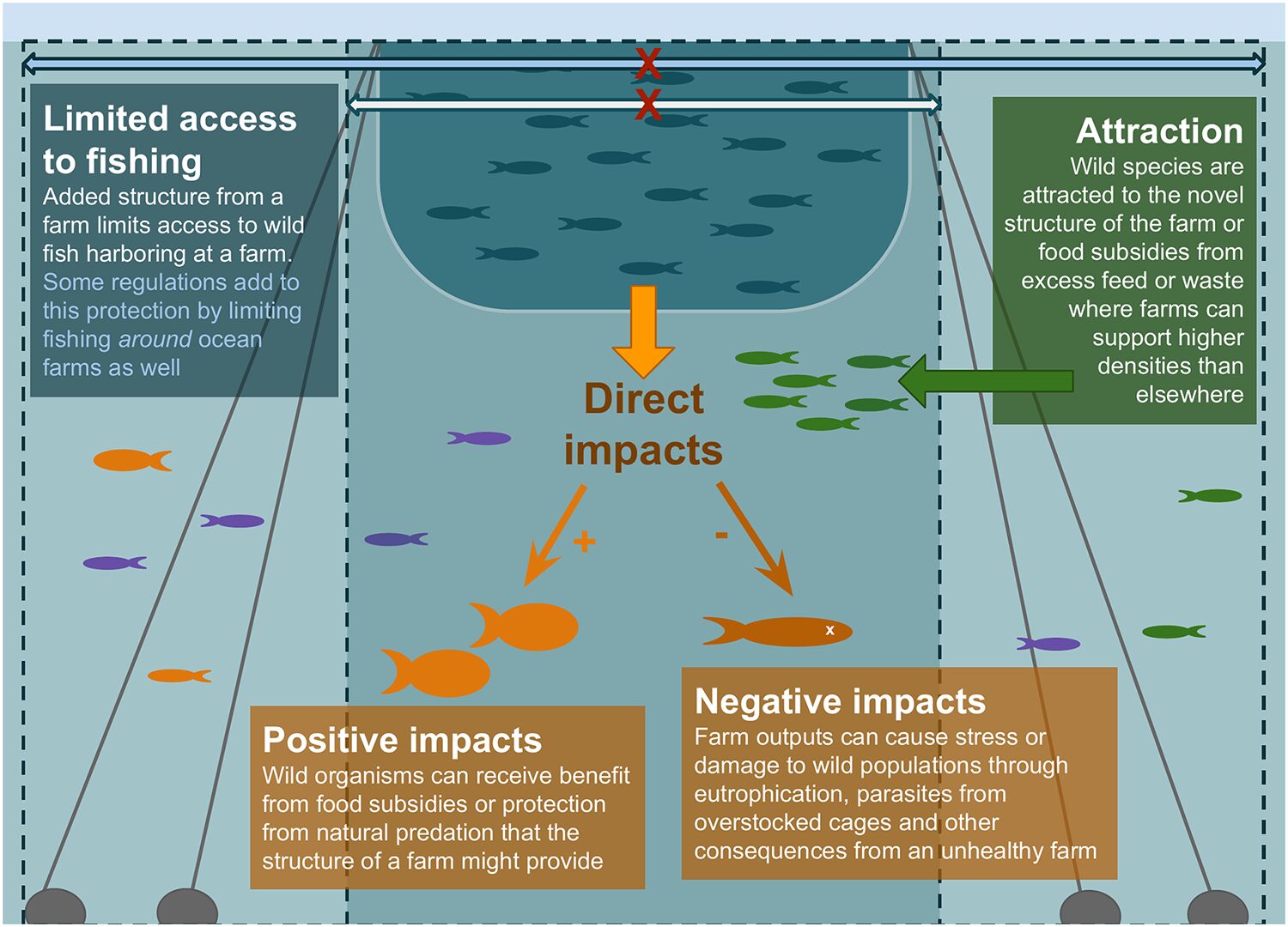
Through these different mechanisms, marine aquaculture can act both as something akin to a fish aggregating device (FAD), with fish attracted to and accumulating around its structure, and as a mini-marine protected area (MPA). Just as FADs are human-made structures used to concentrate naturally dispersed fish populations to increase fishing efficiency, aquaculture installations may provide a similar service to capture fisheries despite prohibiting fishing inside the farm itself, because fishers can fish the edge of the farm. FADs are especially effective for fisheries targeting pelagic species that tend to be highly mobile and broadly distributed. The growth of offshore ocean farms will likely increase interactions with pelagic fishes in ways that may make them more predictably accessible.
This article – summarized from the original publication (Couture, J.L. et al. 2024. Could fish aggregation at ocean aquaculture augment wild populations and local fisheries? PLoS ONE 19(4): e0298464) – discusses the responses of wild populations and capture fisheries to marine aquaculture using a spatially explicit age-structured population and fishing dynamics model to simulate movement of wild fish and fishers around ocean farms.
Study setup
To simulate how ocean aquaculture farms might affect wild populations and wild capture fisheries we use the theoretical population and fishing model from Ovando et al. that focuses on potential MPA implications to fisheries.
This model simulates fish movement and fishery behaviors around areas protected from fishing to test the biological and economic outcomes of different management scenarios. We then expanded the model to include two additional features: 1) the potential attractive impacts of farms on fish dynamics similar to the roles of FADs, and 2) the potential negative/positive impacts of farms on individual fish performance (e.g., through disease, pollutants, or food augmentation). In particular, we adapted the model to include these farm-specific characteristics to explore how ocean aquaculture farms may affect population biomass and fishery catch.
We implemented the model using an annual time step in a simulation area that is large enough to capture changes in parameters of interest; population and fishery outcomes are reported at equilibrium as the difference between population and fishery outcomes with and without the addition of a farm.
For detailed information on the data and modeling used in this study, refer to the original publication.
Fisheries in Focus: What are fish aggregating devices and why is there debate about banning them?
Results and discussion
Results of this study show that, in theory, ocean farms can have positive or negative impacts on wild populations and local capture fisheries depending on several design attributes and traits of species of interest. For the vast majority of parameter combinations, results showed that farms could have positive conservation effects on overall fish biomass and disproportionate increases in total biomass compared to catches suggest that farms could provide a refuge for individuals that would act to replenish fished areas. The exception was only in the case of extreme negative impacts on fish mortality from farm when mortality rates exceeded those from fishing.
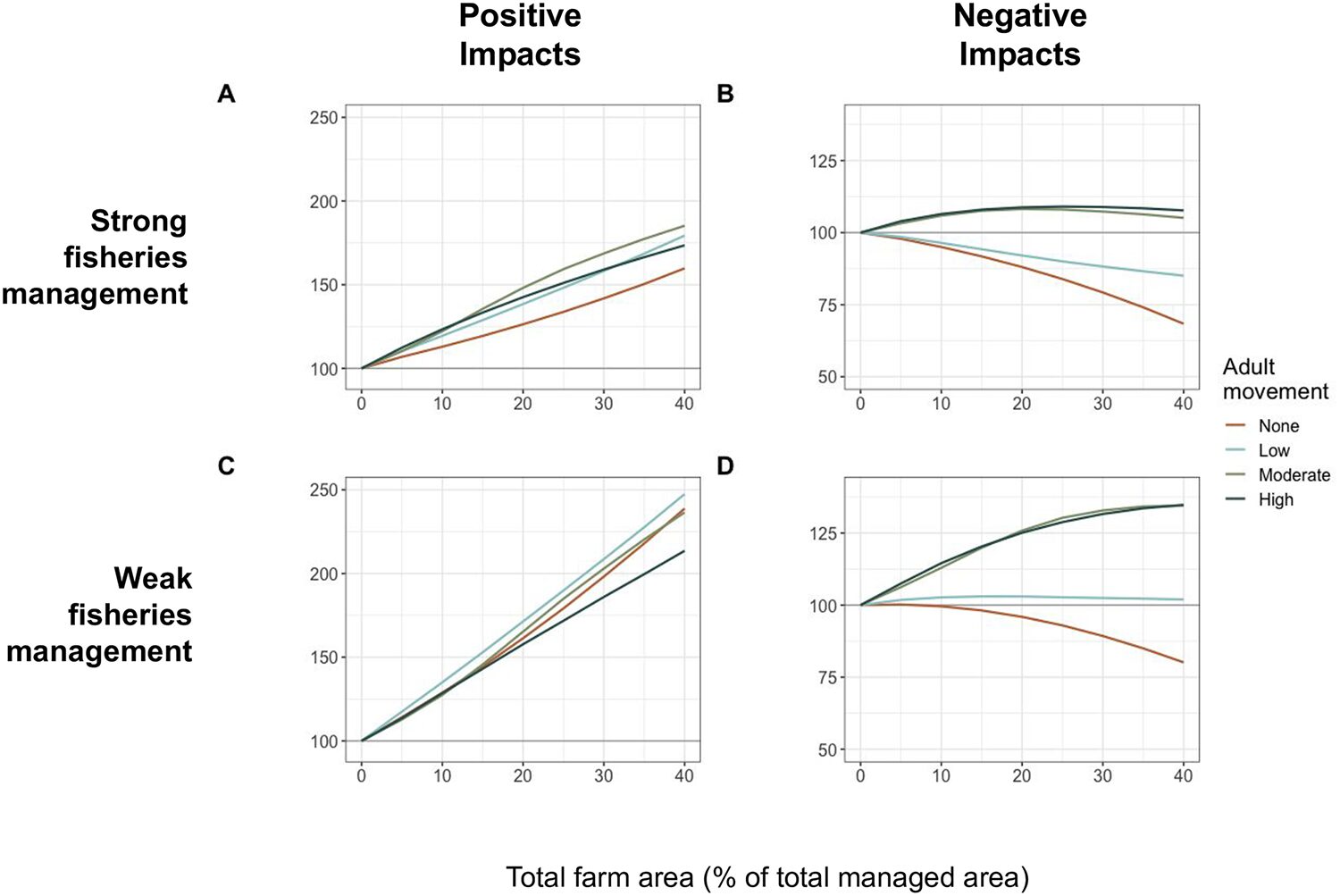
For the effects of farms on fisheries yields, however, the direction and magnitude of impacts depended more critically on the mix of environmental and species influences. As movement slowed, benefits to growth and survival (from protection from fishing) were less efficiently distributed into fishable areas, with benefits to sessile species remaining inside the farm area.
Fishery management was also important in determining the impacts of farms on catches, with potential benefits under both conditions, benefits were maximized under weak management. Smaller farms increased access to farms via an increased edge-to-area ratio, which increased aggregation rates of wild individuals more quickly, leading to more rapid benefits from increased aggregation sizes within farms and subsequent protection from fishing. In order to apply these insights to the strategic design and planning of an ocean farm, a clear understanding of each parameter is needed for a given ocean farm setting.
Movement patterns around farms played a dominant role in our forecasts of outcomes for wild capture fisheries with the introduction of aquaculture. Unfortunately, our empirical understanding of behavioral responses of fishes, such as aggregation rates and their propensity to move from a farm across multiple fished species and farm types remains relatively limited, although the widespread use of FADs in many pelagic fisheries suggests that this attraction to new habitat likely plays a significant role in farm impacts.
Farms can have at least two direct conservation benefits. First, they add structural complexity to an area, which can provide habitat and other biodiversity benefits for many species. Second, our results show the potential for farms to provide strong benefits to conservation in an area by providing refuge from fishing under both weak and strong fisheries management. There may also be other conservation benefits, such as enhancing the population size of key fish species and adding to their metapopulation structure. In order to strategically use farms as a conservation tool, though, a better understanding of how different species react to and interact with a farm is needed.
Given the relatively limited amount of area currently occupied by marine aquaculture, these results suggest there is substantial scope for well-designed and managed farms to create future fisheries benefits. Increases in farm benefits to the growth of individual fish, which may be an important motivator for fish attraction, subsequently spilled over to predictably benefit nearby fishable areas. Given the potentially strong synergistic interactions between aggregation at farms and farm design, understanding the movement patterns of key stocks of interest and how such patterns will be modified by ocean aquaculture is important for strategically designing the ideal sizing and spacing of new ocean farms in different ecosystem settings.
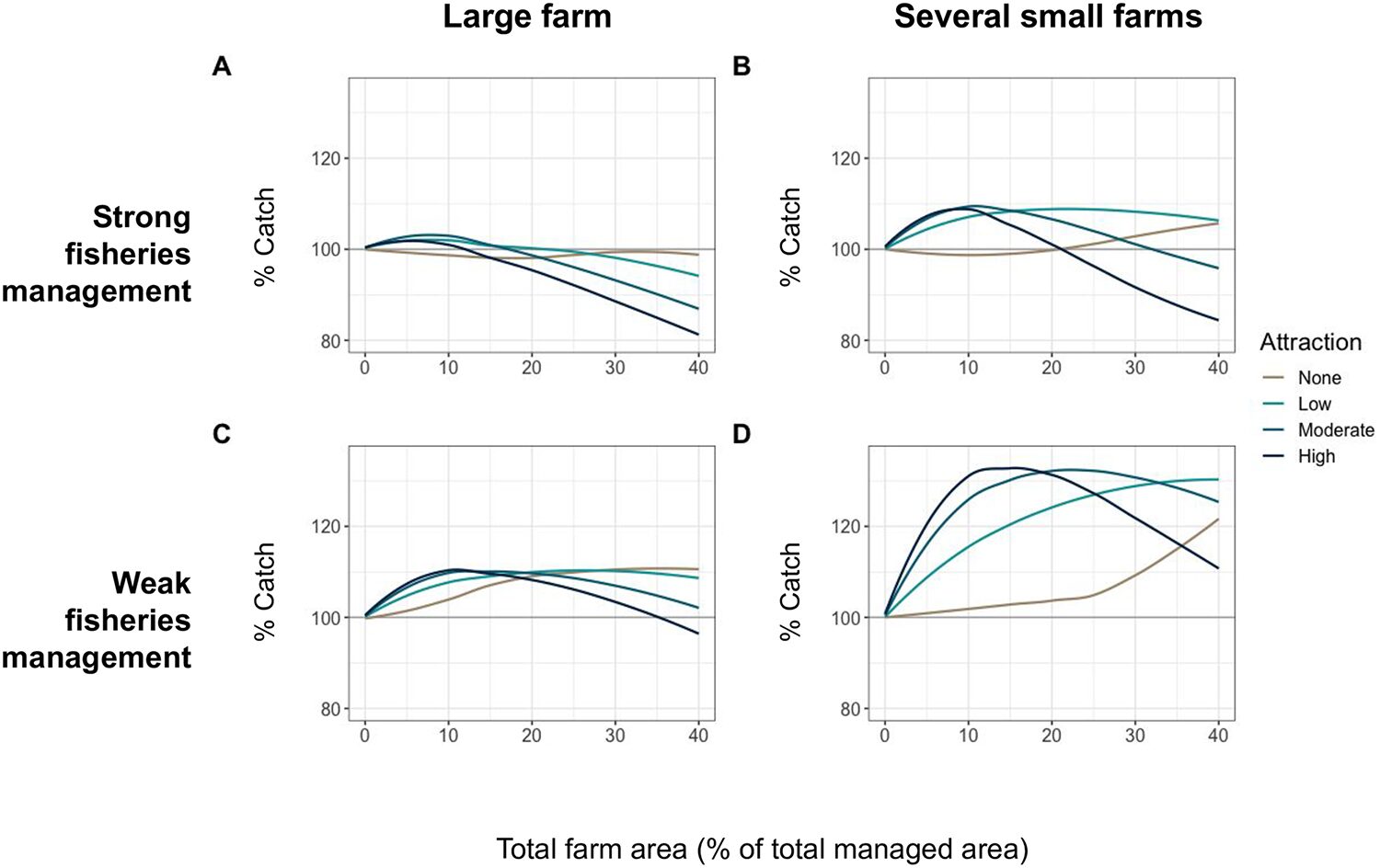
We showed that the interactions between ocean farms and wild capture fisheries likely depend significantly on the design of the farm and the ecology of the target species. To connect our theoretical findings to practice, there is a need to parameterize our model with site- and species-specific information. Determining rates of aggregation at a given farm for a particular species is critically important but will be challenging. However, telemetry studies to track the movement of species of interest in and around farms can be used to provide an empirical measure of attraction.
Although our results suggest potential benefits from farm alterations to fish movement patterns and protection from fishing conferred by ocean farms, these benefits can be significantly compromised by detrimental farm effects on individual fish performance. Negative farm impacts need to be minimized to support a healthy ecosystem and a healthy fishery. Still, these results suggest that the expected trade-offs between different farm designs, modification to movement, and direct impacts to fitness can lead to surprising results, such as benefits to catches despite increased stress to individuals around farms. Whether benefits or losses to fishing would result from the introduction of a farm is contingent on these trade-offs between benefits from protection and damage from the farm.
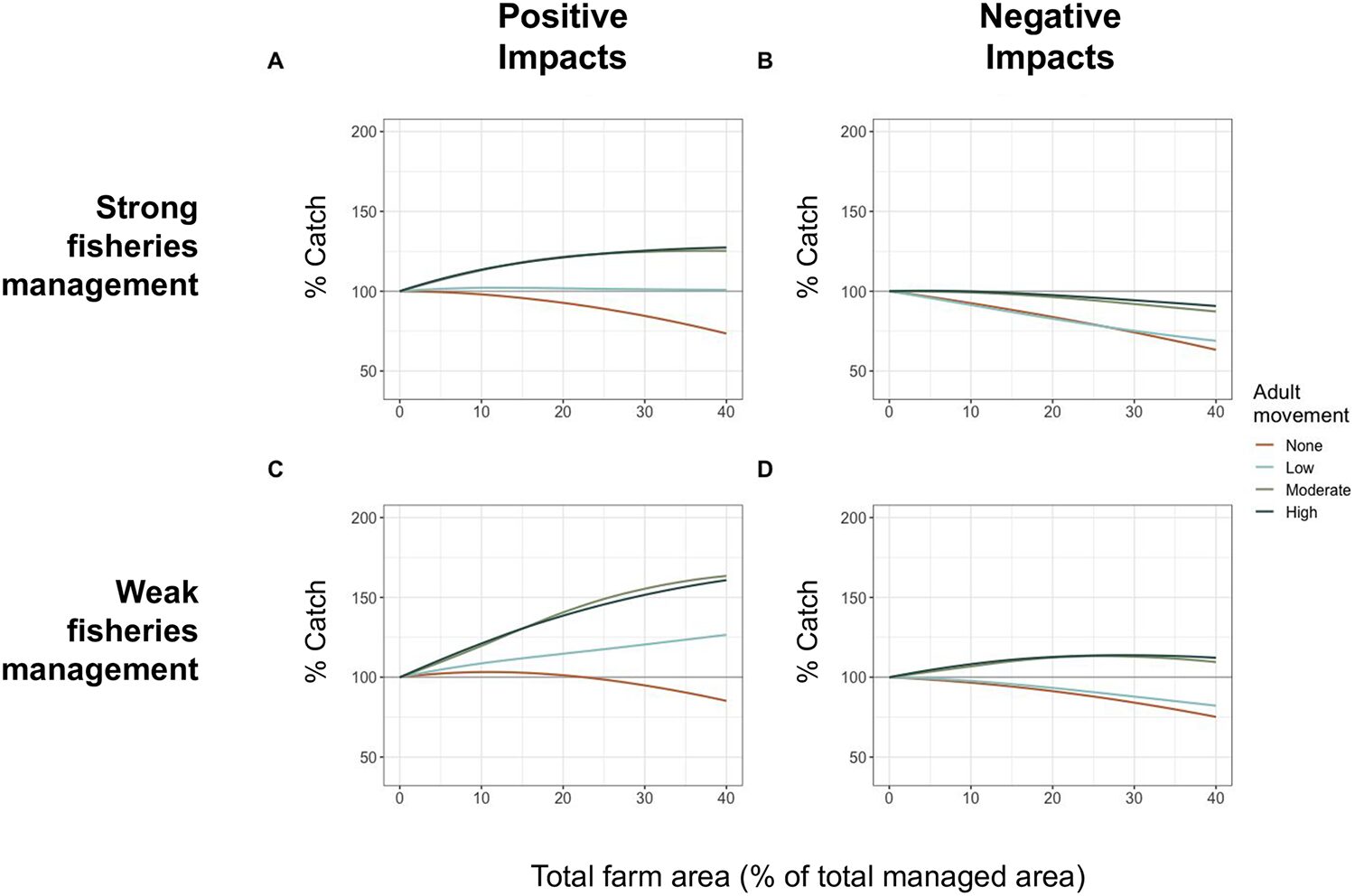
High variability in movement rates and level of aggregation is common among fish species, and responses to farms can also vary temporally. Improved information on both of these factors would help refine our model and its predictions. Our focus here was to evaluate how varying each model parameter might hypothetically affect outcomes. While ocean farms are small compared to species distributions, species with small home ranges could see large proportions of their experienced range occupied by a farm, with important consequences to local fisheries.
The degree of species’ aggregation – including both attraction and retention in response to altered habitat quality – is difficult to measure empirically, but its strong potential role in driving benefits from farms to both fisheries catch and fish biomass warrant more focused empirical attention. Even as the marine aquaculture industry grows in many countries, total farm areas generally remain quite small compared to managed areas and movement capacities of many fished stocks, particularly as farms move offshore where species movement tends to be greater.
Often considered a nuisance to farmers, species that foul farm infrastructure can attract and feed predatory fish species. Larger predatory fish are also attracted to ocean farms to prey on other aggregated wild species or the biomass of the farmed product itself. In many locations ocean farms create more of a dynamic system than was evaluated here. Multi-species and ecosystem level interactions at an ocean farm could change the outcomes found here and are important to understanding the real impacts of ocean farms on fishery and conservation goals.
Perspectives
When used strategically, ocean-based aquaculture has the potential to benefit both wild populations and fishery catches. Empirical studies of local ecosystems, fisheries, management and aquaculture goals will be essential to defining the context of each farm and informing strong coastal management. For example, understanding how movement dynamics might be further modified by ocean farms (e.g., which species will be more resident or transient at farms? How are these processes affected by seasonality of farm use and migratory behavior?) will help optimize farm design and management in support of local objectives.
FAD-like effects found for the “several small” farm design can enhance social sustainability by increasing fisheries catches, but there can be tradeoffs between fisheries and conservation objectives. If conservation is the priority, farms should instead be grouped together, or buffer zones that prohibit fishing around farms can be used to extend protections of aggregated individuals. To this end, managers are increasingly employing multi-use MPAs allowing aquaculture operations within no-take zones.
Aggregation at these farms may increase the protective benefits of the MPA to wild populations by attracting more fish to the protected area, as long as farms do not cause excessive harm to wild populations or ecosystems. Both wild fisheries and marine aquaculture are predicted to be increasingly significant food sources for human populations globally; understanding how to best plan for and manage these coexisting industries will allow us to efficiently produce diverse seafood products while also supporting robust and sustainable coastal economies and ecosystems into the future.
Now that you've reached the end of the article ...
… please consider supporting GSA’s mission to advance responsible seafood practices through education, advocacy and third-party assurances. The Advocate aims to document the evolution of responsible seafood practices and share the expansive knowledge of our vast network of contributors.
By becoming a Global Seafood Alliance member, you’re ensuring that all of the pre-competitive work we do through member benefits, resources and events can continue. Individual membership costs just $50 a year.
Not a GSA member? Join us.
Author
-
Jessica L. Couture, Ph.D.
Corresponding author
Bren School of Environmental Science and Management, University of California, Santa Barbara, California, USA
Related Posts
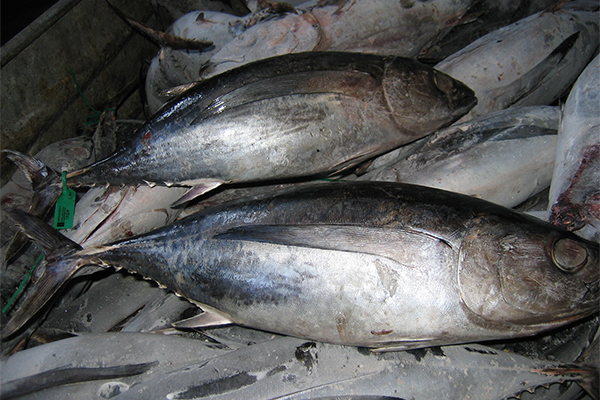
Fisheries
A synthetic control approach to estimate the effect of total allowable catch limits in the high seas
Research highlights the potential of a synthetic-control method to estimate the causal effect of catch quotas on fishing mortality and biomass.
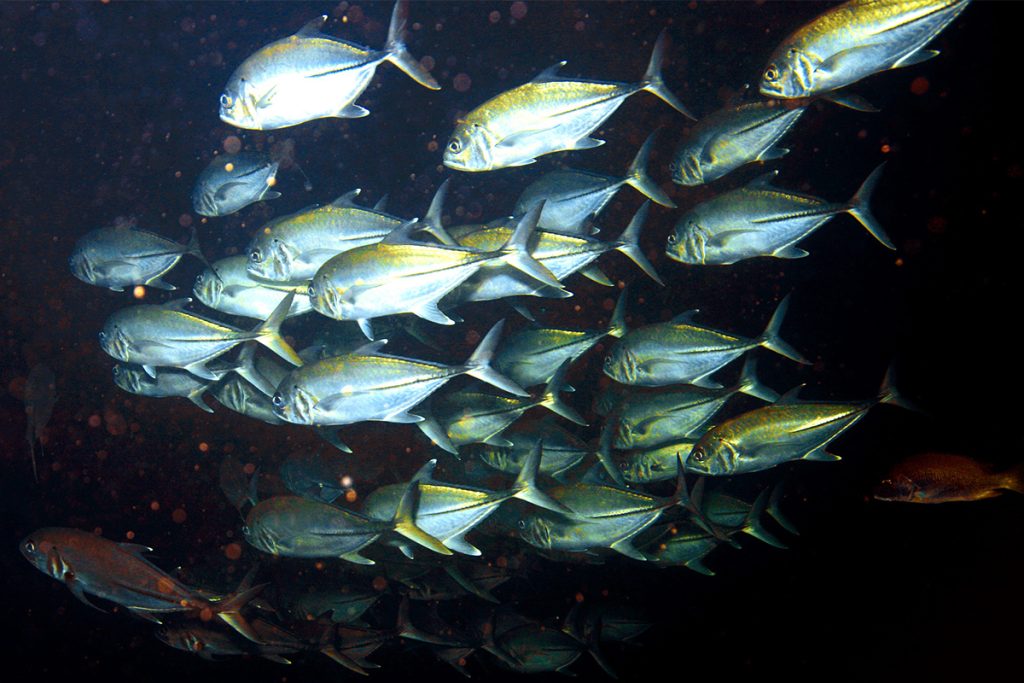
Fisheries
Creating a teleost fish traceability program based on genetic data from the Pacific coast of Panama
This research supports a future molecular database for fish stock identification, genetic health, understanding population patterns and management.
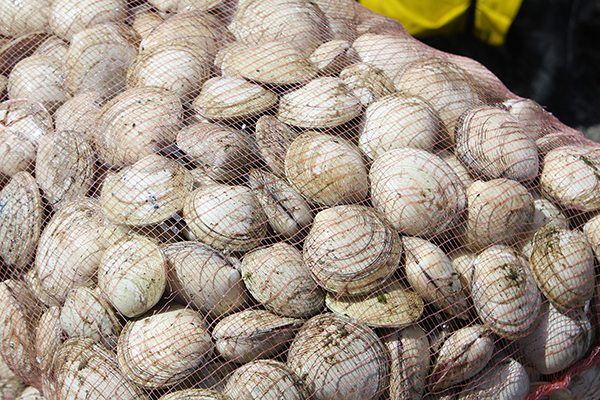
Responsibility
All clams on deck: How restorative aquaculture can repair Florida estuaries
New legislation aims to tackle tough environmental issues in Florida estuaries by bolstering the number of clams and seagrass through restorative aquaculture.
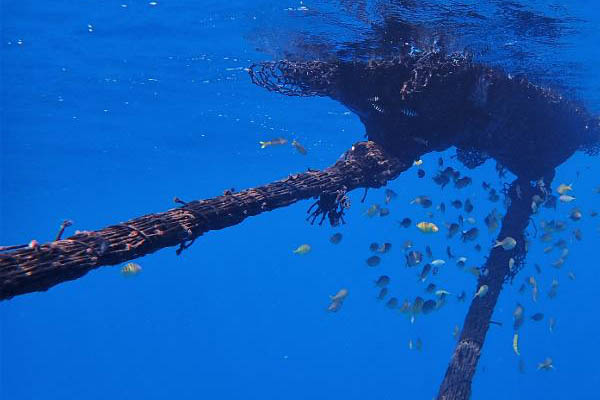
Fisheries
Can repurposing fish aggregating devices make MPAs more effective?
A new study suggests that fish aggregating devices could be repurposed to enhance marine protected areas (MPAs).



